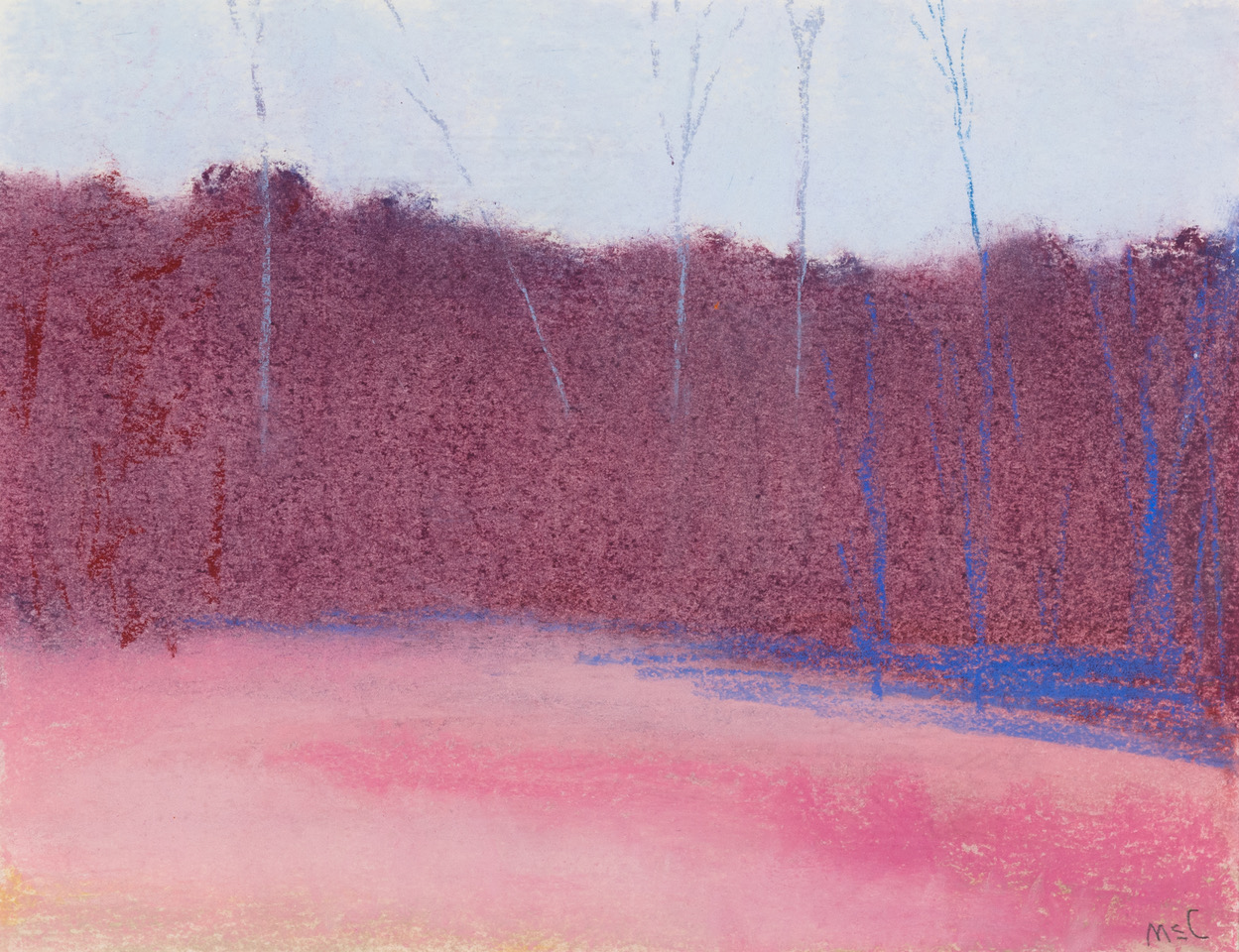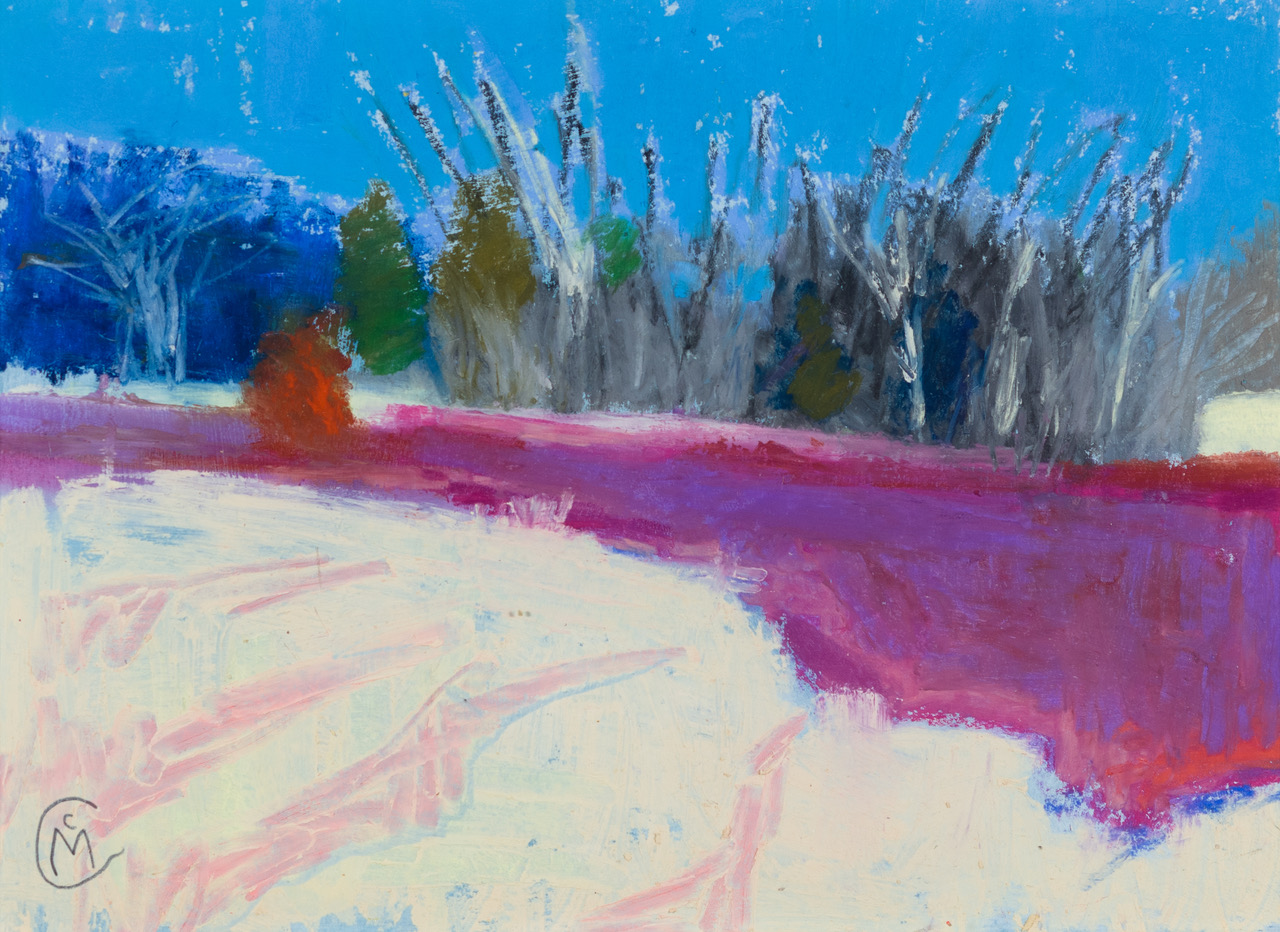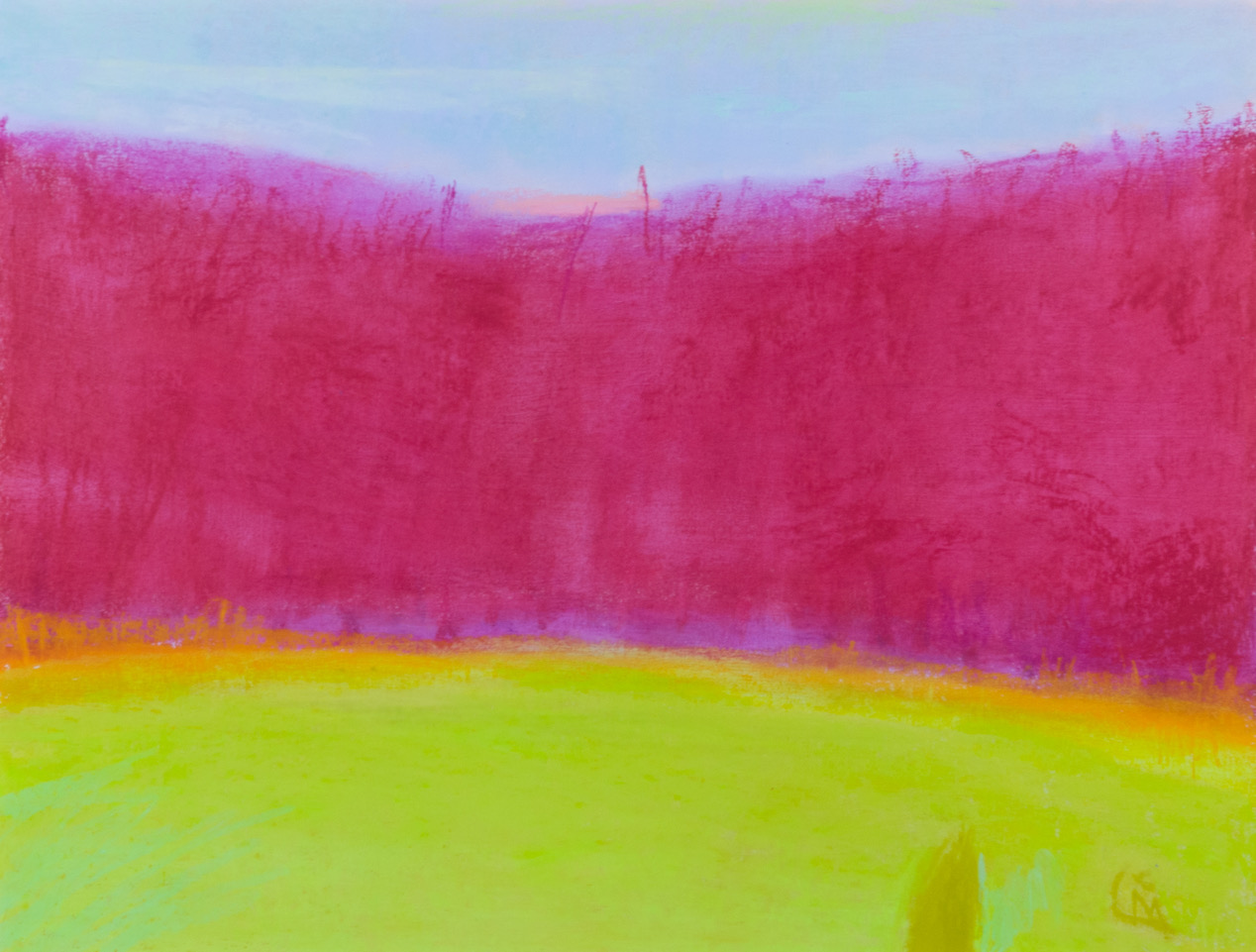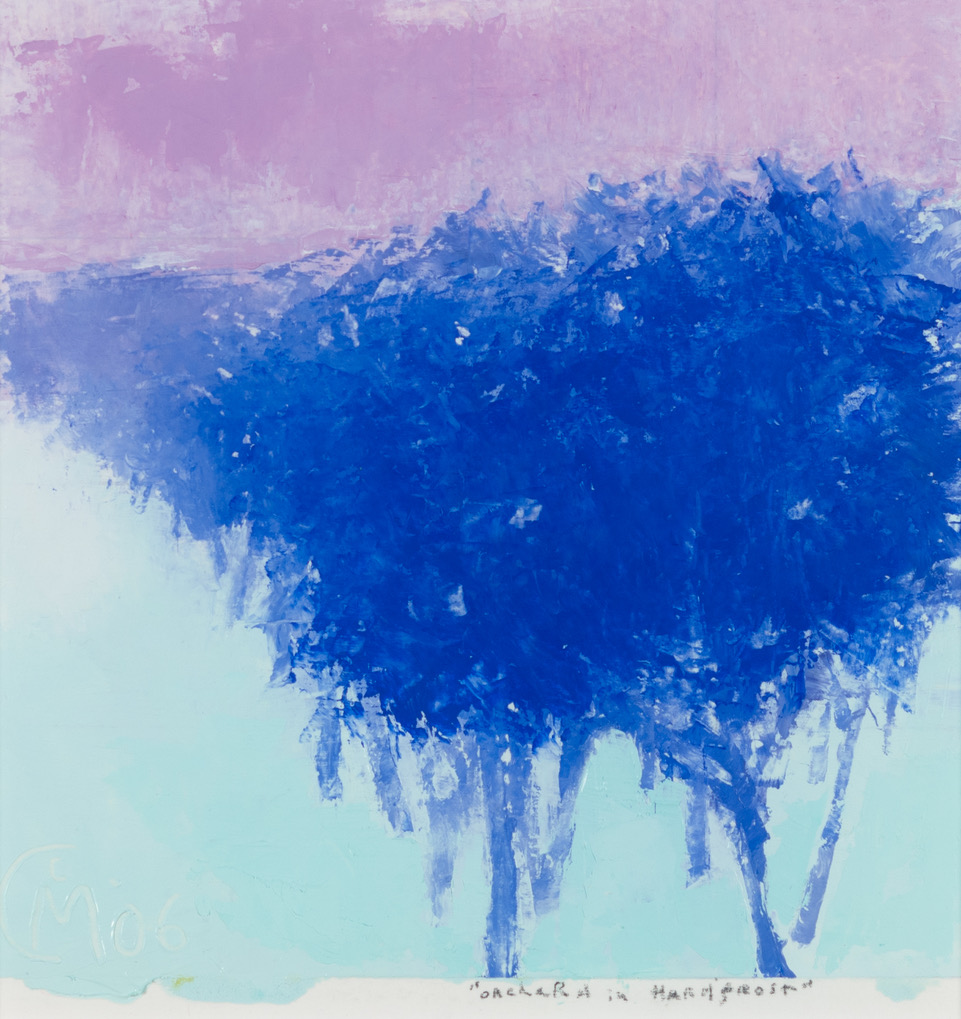John McCarthy
Time: Ann Lyne, John McCarthy, Ana Rendich
25 January – 1 March 2020
Exhibition page >
Visions of Spring
21 February – 30 March 2014
Exhibition page >
John McCarthy: A Retrospective
22 April – 5 June 2011
Celebrating John McCarthy’s Art and Life
20 May – 31 May 2008
An Art Autobiography of John McCarthy
I am a native of Norfolk, Virginia, where I grew up in a middle to upper-middle class neighborhood attending public schools. Art was always a strong interest in and out of school and my mother arranged for me to have some semi-private art lessons while still in grammar school.
My best friend at that age was a genius draftsman of the same age and the two of us entertained ourselves by inventing two neo-Roman nations and then designing their governments, outfitting their soldiers in uniforms, etc.
Grammar school art teachers were always very encouraging of my efforts. It was a source of great pride to me that a painting of a football game I did in gouache was displayed in the school library for what seemed to me an eternity. The big drawback to grammar school art from my perspective was that the only painting medium was a horrible gouache powder which the student was required to vainly try to mix with water. A mess! Thus it was a relief whenever my parents would buy me a set of the relatively expensive “Skecthos,” richly oiled crayons not unlike today’s oil sticks which are used expertly by artists such as Herb Jackson.
In my latency period I was naturally and sublimatedly driven to focus on the design of what were then known as “dream cars,” called today by Detroit “concept cars.”
Boardwalk art shows in nearby Virginia Beach were annual events of great importance to me in my teen years and I was privileged to see there highly textured, richly colored works by what I remember as very competent professional artists. The works in these shows reflected the influence of the abstract expressionist works I was beginning to marvel at in such publications as Time and Life. I was especially drawn to the muscular power of Kline’s work, the sheer audacity of Pollack’s and the energy and humor mixed with dreadfulness of de Kooning’s women.
Somehow, I overlooked the glowing, awesomely silent work of Rothko but that oversight was cured when I enrolled in Professor Edgar Thorne’s art history survey course at the University of Virginia. I’ll never forget seeing those Rothko paintings and others in the Phillips on a field trip Thorne led. To the degree I have any ability to see art with discernment it’s likely largely the result of Thorne’s patient tutelage.
Following graduation with a degree in philosophy from the University of Virginia and brief period of work to gather tuition funds I enrolled in law school at the University of Richmond where I did well scholastically largely as a result of being sucked into law school’s competitive atmosphere. After law school I entered a private practice that was increasingly centered on criminal and civil rights litigation. I’m still proud that I successfully represented the Gay Alliance of Students in their quest to obtain recognition as a student club by VCU at a time when none of the ACLU’s usual lawyer volunteers would touch the case.
After the usual burn-out of an intense criminal litigation practice, I was appointed to a special assistant attorney general by then Attorney General Marshall Coleman and began this public practice doing title searches in the state’s Northern Neck. I learned a lot of social and economic history of that area by just searching legal records. I also began to notice the landscape–something I’d not done much of since my childhood trips to the Blue Ridge. I was later transferred to the Richmond office of the Attorney General’s Office and my practice was then more focused on litigation. General litigation was often a quite educational experience because of the various underlying subject matters and the experts interviewed and deposed. In fact, I cannot think of a better course of study for a general education than such litigation.
I began to take up landscape painting in the late eighties after spending about six years photographing it from my rural eastern Piedmont home which I continue to share with my wife of thirty years. I was fortunate enough to enroll in some workshops taught by landscape pastelist and painter Wolf Kahn. His influence on my approach to landscape painting owes much to his maxim to “come slowly and grudgingly to something that resembles Nature.” He’s a remarkably generous teacher.
In 1996 I resigned from full-time practice of law although I continued to work in the Attorney Genera’s office on a part-time basis for four more years.
In the spring semester of 2006 I re-enrolled in the University of Virginia to audit Dean Dass’ introductory course in printmaking with his kind permission. The stimulus this course provided to me and the extraordinarly patient assistance and encouragement that Dass gave me as a student will always be remembered. He shares with Kahn and Thorne that generosity of spirit every great teacher seems to possess.
Today, I pursue landscape painting and printmaking with an equal avidity, believing that each activity enriches the experience of the other.
Written by John McCarthy, 2008
“How John is missed!
This is a man who wore many hats in the course of his lifetime and played many roles for his family and friends. He had a public life, a working life, to be sure. He retired from the full-time practice of law in 1996. But by the time I met John McCarthy—it was at an art opening for a solo show in Charlottesville—he was in a later phase, that of being an exceptionally interesting and interested artist.
He became for me a reliable friend and a letter-writer and a source of information, insight and inspiration for years running. And I am not done with him yet.
This fellow walked a tightrope, tipping forward in the course of a single conversation with opinionated, strongly voiced hilarious observations, then tipping back with self-effacing, self-deprecating remarks. And he sure could paint.
He also read art voraciously – history, biography, criticism. He had an appetite for the new. He would try on new styles, new techniques, new media. He was not, as many are, too old to learn. He took courses in what he hadn’t yet tried, happy to be a beginner all over again.
He took on printmaking, after painting, and then back to painting, now with fresh ideas. He tried small canvases and then big and then small. He learned palette knives after brushes, and then brushes again. He made wonderful photographs. But he was first and last a colorist and knew it and said so.
And we still have John McCarthy in his art and his skill is still so fresh. It gives us the pleasure that was in the eyes of the artist seeing something and then making something, and which now our eyes would delight in and wish to see again and then yet again. Which artist would not want that said of him? And yet it can be said of John, in spades.
He was ravenous to look at art and would travel to do so. Between one letter and the next, from 2000 to 2008, John together with his wife Judy would have seen another show and another, and he could write about it so well that you took in its essence. He kept up a steady diet of books, journals and exhibits and always had a new interest and a new plan.
He sampled many tastes—Bonnard, Diebenkorn, Turner, Morisot, Auerbach, de Kooning, Avery, Monet, Warhol—but he had his favorites, those he would come back to again and again and claim in his own work: Matisse, Rothko, and especially Wolf Kahn.
He was a student of Kahn both artistically and actually; taking a workshop and getting the artist’s personal advice. He read every interview and comment and even bought Kahn’s work, several times. He was “enchanted” by Kahn’s strategy: “Come slowly and grudgingly to something which resembles nature.”
I have a sharp memory of John describing an entire day spent at a canvas carefully studying and then improvising from a tiny corner portion of a Matisse print, a small swatch of color juxtapositions which had intrigued him; exploring, experimenting with exactly how just a few colors had coalesced with such felicity and advantage.
From Rothko he gleaned an entire visual format: the colors above and the colors below a line which, however abstract in presentation, must be read as a horizon—that is to say, a landscape, saying, “My work continues to be these straight shots of landscape that…owe a lot to Rothko. Every time I start to work on a different motif I realize…it’s not what I want to do and head back to a basically horizontal motif.”
John unabashedly appropriated ideas and techniques from other artists, mindful of Picasso’s remark about “stealing from the best”—but John only borrowed from artists who loved paint, not just painting but paint itself, how it moved on the surface.
Several days ago I painted over an old canvas with oil primer and after that dried I applied a mixture of ultrmarine blue, manganese blue and a generous helping of titanium and zinc white. It made the loveliest blue I’ve yet been able to make. I wiped off portions of it… and the canvas looks like disturbed water in a swimming pool.
He retrieved and sent me a quote which quite delighted him from the artist Sean Scully:
“I use oil paint because it has a disobedient and mysterious nature…It engages issues of alchemy and mystery that resist the deadening ambition of the modern world to control everything absolutely.”
John’s feelings were strong and his reactions unmuddled and a great pleasure to hear. About Cy Twombly he wrote: “His purely graffiti works leave me cold. His more lush paintings are irresistible!”
And about another artist: “The richness of…colors and sumptuousness of…surfaces (is the) painterly equivalent of ‘slow food’ (in that they appear) unhurried and devoid of undue angst.”
His analysis of others’ work was lucid and plain spoken: “I don’t think I’m better than the artist just because I criticize her color. She obviously emphasizes design while I’m for color all the way.”
And about another: “Klee said he was willing to sacrifice monumentality for the sake of intensity. Me too.”
With John it was always the new. He painted fearlessly. He conveyed boldness and energy. In one letter he said, “I’m painting up a storm!”
And in another: “The process of painting consists largely of screwing up and then rescuing the painting from disaster.”
And in yet another, “Occasionally something happens when one has the ‘impudence’ of faith to believe it could happen.”
Yet humility attended all his experiments and he could take criticism. About a large canvas, which we discussed extensively, he said, “I don’t think it’s a great work or even a good one, just had to get that Pollock thing out of my system.”
Also: “I…have started off in a new direction here at home and, guess what?, my wife likes my old work better!”And, “It’s frustrating to me but I think part of my frustration comes from a thought in the back of my mind that she’s right.”
And last here, but first in my memories, is John McCarthy’s sense of humor. He took art, but not himself, so seriously. He once responded, when someone recommended to him that the artist Morandi serve as his model, “Trouble is, Morandi had such integrity and his work is so austere that it simply doesn’t fit my suave and flamboyant personality.”
And, “Lately, I’ve been in that essential learning phase that…no one pays us for!”
John was good-humored in the face of disappointment. In one letter he noted dryly,
“The works that I sent to New York have now been returned to me as ‘too bright’. After getting them back, I looked at them and decided that, indeed they were too bright!”
After a less than robust opening night for a show, he wrote that “Weather.com predicted 2 inches of rain that night and I think that depressed turnout*
*not a drop fell.”
I have wanted to say the right things about John McCarthy, with his fine mind and marvelous hand. I have failed to even touch on another face of the man shown to me—his generosity. I bought some paintings and he gave me others. He shared his time and himself and the pleasure, which that memory gives is strong. So too the pleasure of remembering a scene of happy domesticity: the landscape and home and wife (and Buddy the dog!) and an artist at the quotidian task of making great art, one conversation at a time.”
—James Brewer
January 2011

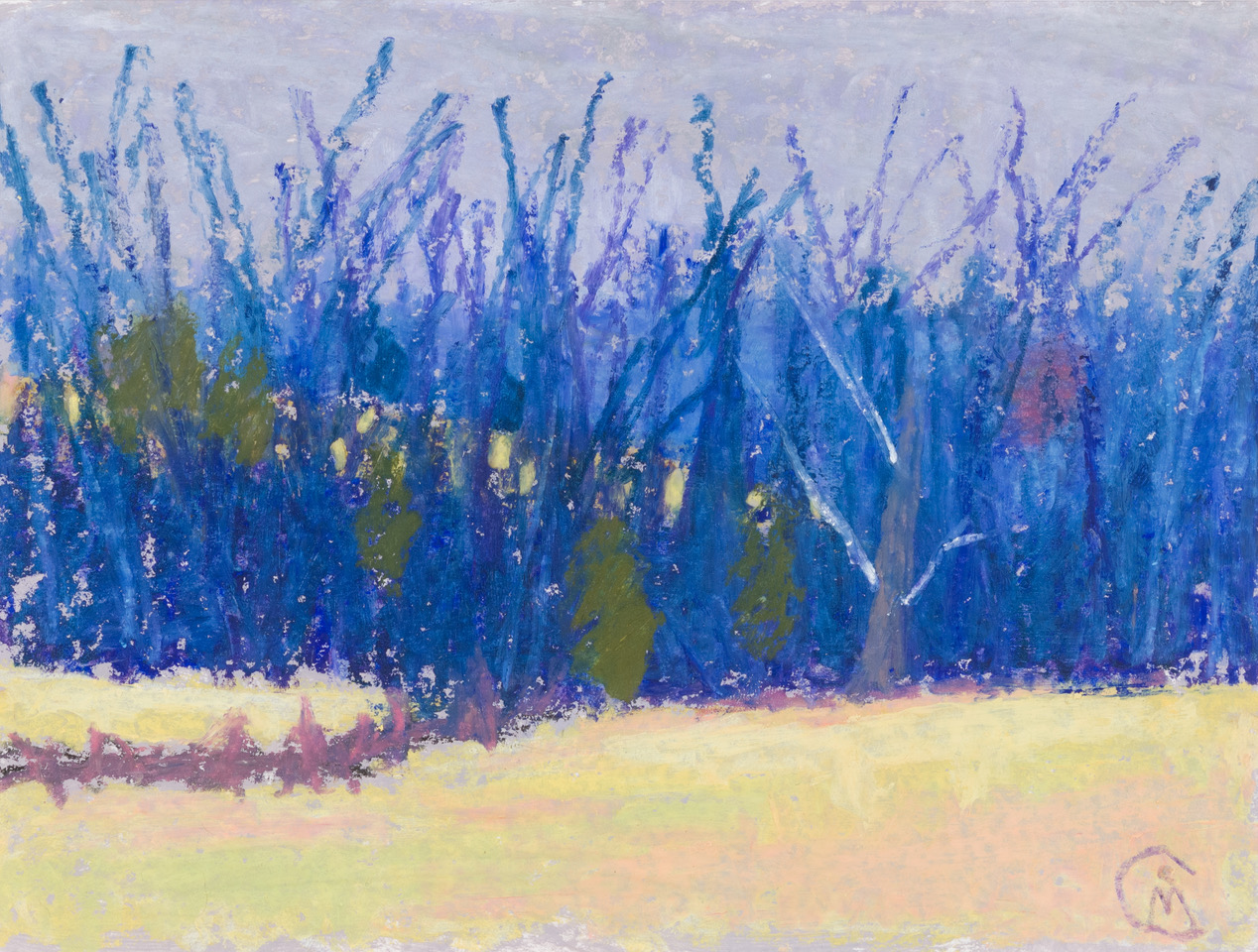
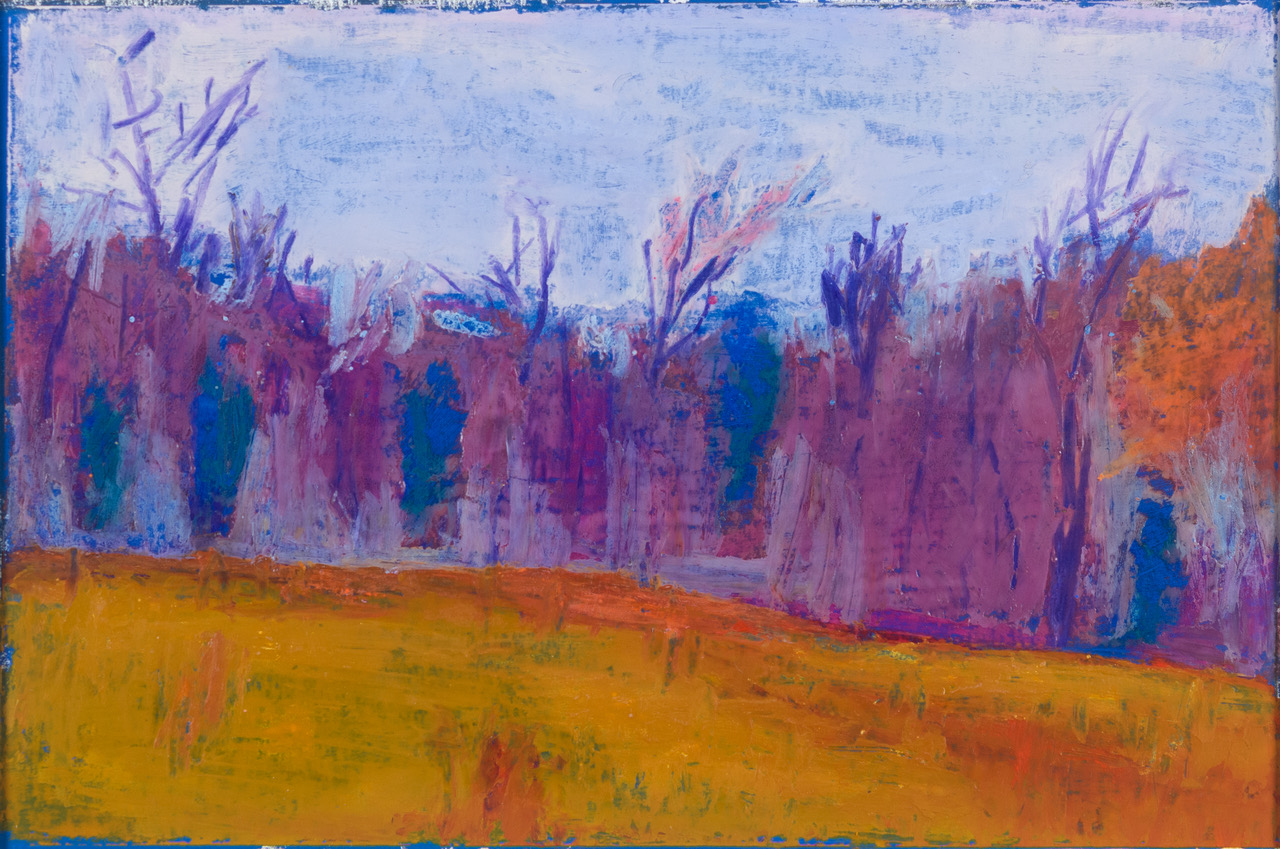
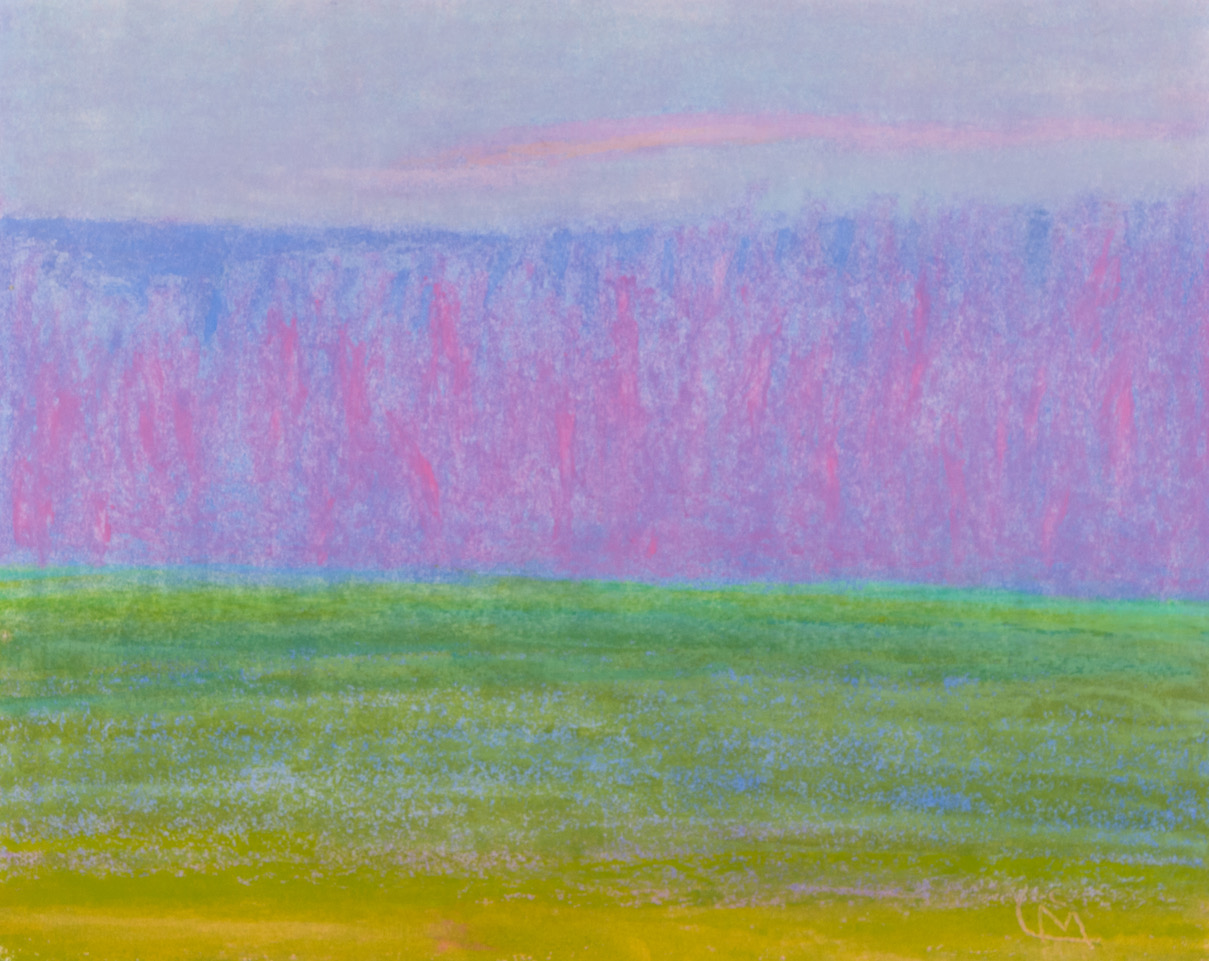
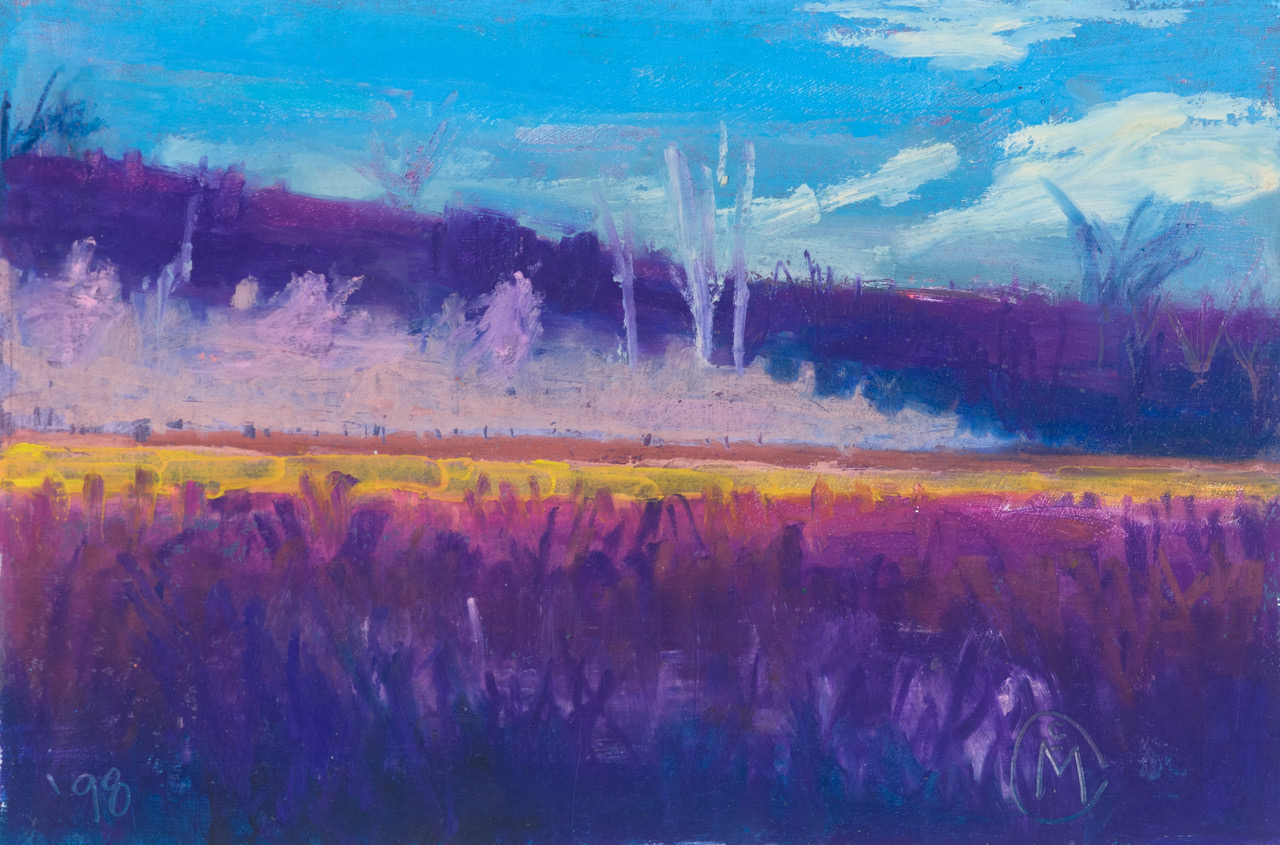
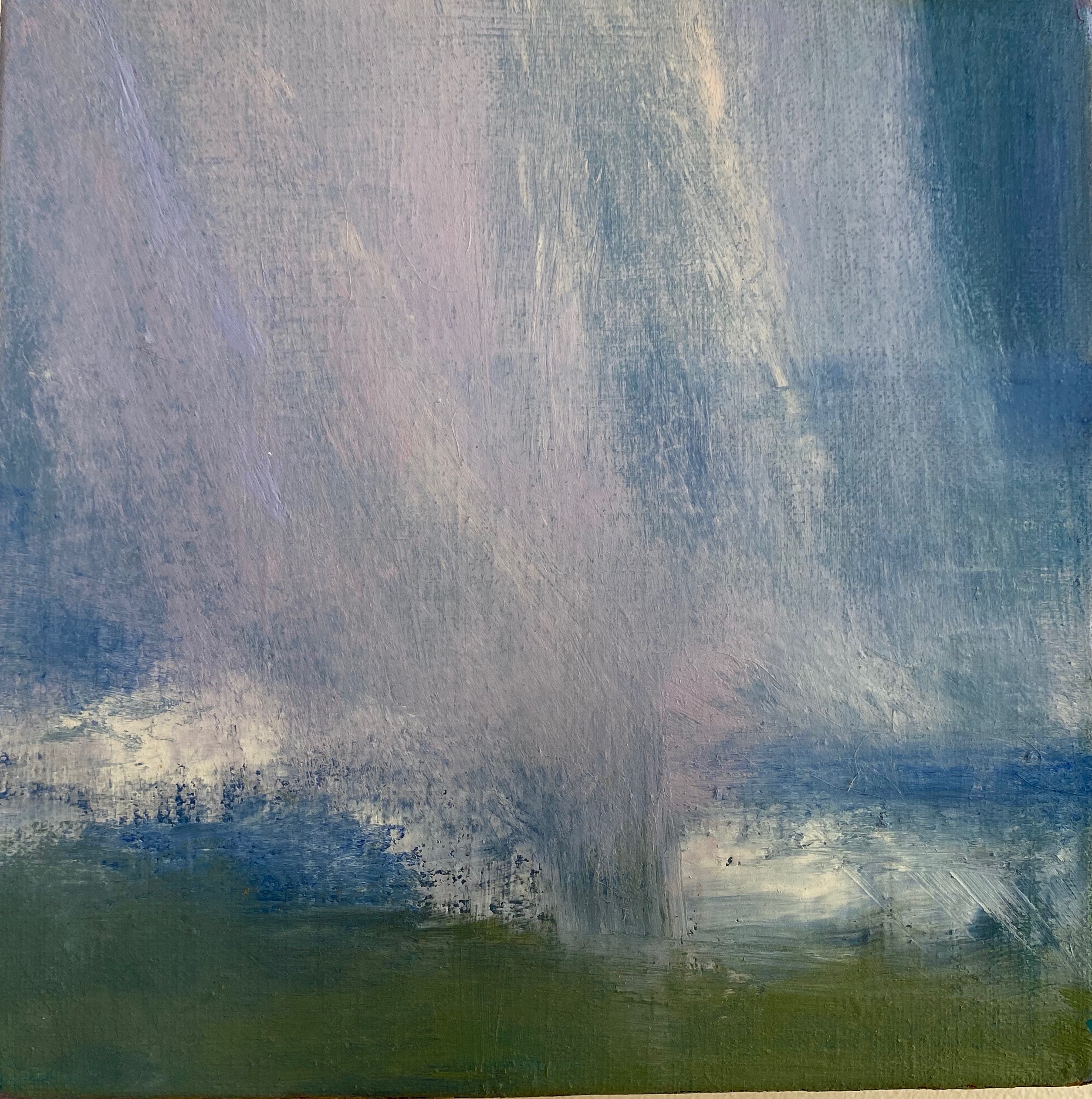 Storm Coming over the Ridge, 2008. Oil on linen, 8 x 8”
Storm Coming over the Ridge, 2008. Oil on linen, 8 x 8”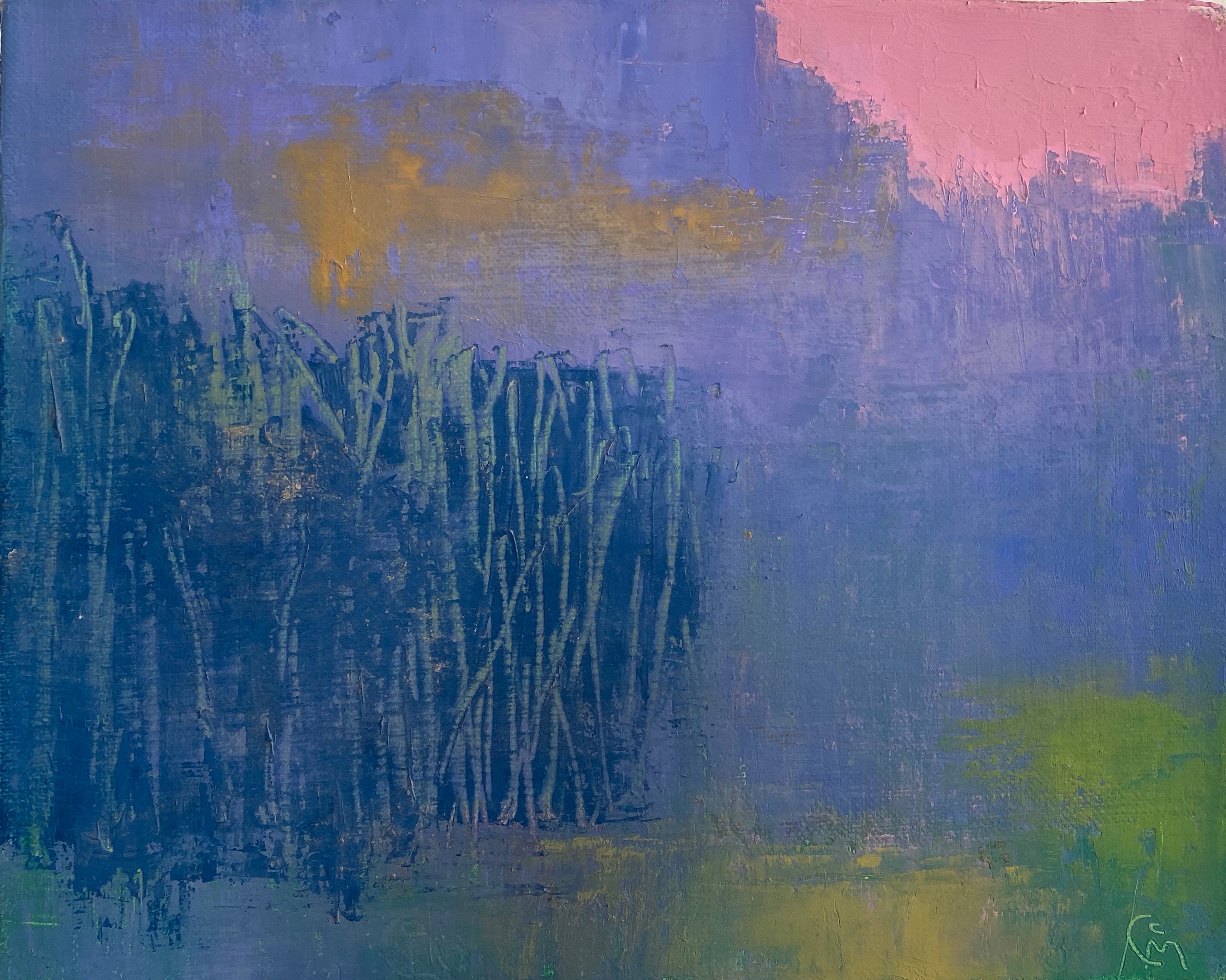 Field behind the House, 2008. Oil on linen, 8 x 10”
Field behind the House, 2008. Oil on linen, 8 x 10”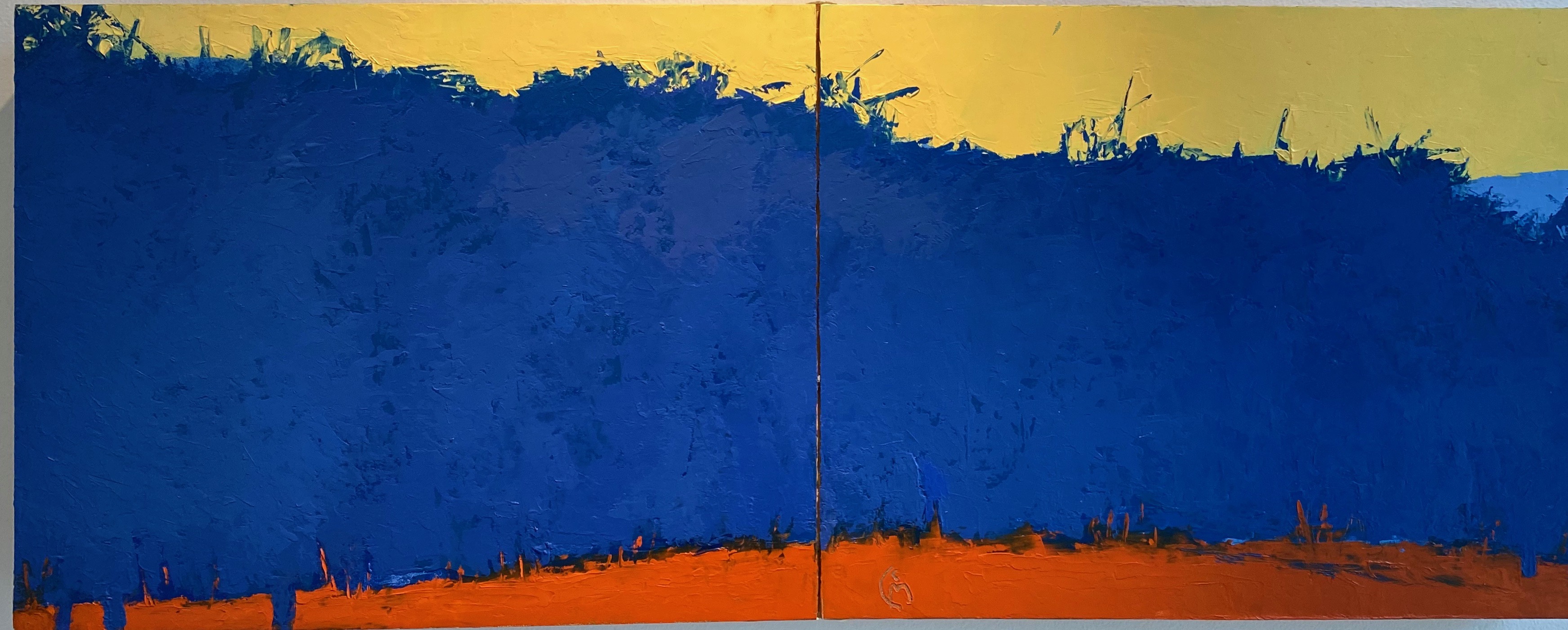 Blue Tree Wall Diptych, 2007, oil on cradled board, 11 x 28”
Blue Tree Wall Diptych, 2007, oil on cradled board, 11 x 28”